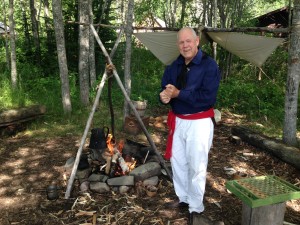
Another area of Grand Portage National Monument where you will find living history rangers is the Voyageurs Encampment. After the voyageurs had paddled 1,400 miles and arrived at Grand Portage, they could take some time off to relax before starting their return journey. The Voyageurs Encampment is set up as a place where they could do this.
During the time of Rendezvous, there would have been as many as 1,000 voyageurs at Grand Portage. They would make their camp outside the depot stockade and eat, drink, relax, talk, and play games. They prepared their own food over campfires and tended to stay
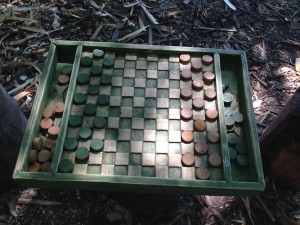
with their brigade – the men with whom they had traveled – although they might challenge other brigades in games of lacrosse, wrestling, or hatchet throwing. The North West Company might have encouraged challenges such as a tumpline relay: seeing what brigade could carry the most the farthest and fastest. There may have been canoe races. There was definitely singing and dancing with music provided by fiddles and bagpipes.
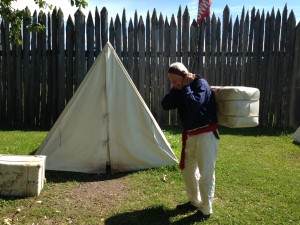
Most of the voyageurs were French Canadians recruited from the area around Montreal. They were usually young men between 17 and 40 years old. They would paddle the canoes from 12 to 14 hours a day 7 days a week for two months until they reached Grand Portage, and then they would do the same to return home. When they got to rough places or waterfalls along their route they had to carry the cargo over portages. Their contract specified that they had to be able to carry two 90 pound packs at a time over a portage. They would make three to six trips to carry cargo across. Some of the voyageurs bragged they could carry three or four packs at a time!
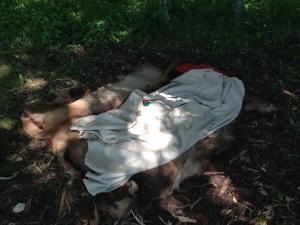
Presently, in the Voyageurs Encampment, we have one or two voyageurs who are engaged in similar activities. There is a bed with blankets and an elk fur under a tent that serves as a tarp on nice days and as a barrier to rain on other days. The voyageurs at the encampment cook, whittle, do canoe repair, and play games. Only the men are assigned to the Voyageurs Encampment (there weren’t any women voyageurs), although I often give my program there and cover during lunch breaks.
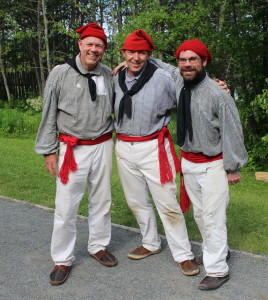
Some people ask us if the voyageurs had a uniform. If you look at the voyageurs working at Grand Portage today it might appear that they do. They were given a clothing allowance and could pick their clothes from the company store. Because there was a limited variety, the voyageurs tended to dress alike. They wore pants and shirts provided by the store, and then dressed them up with boots or moccasins, sashes and hats. Red sashes and hats woven or knitted by mothers or wives were a favorite of the French Canadians: red symbolizes freedom and the life of a voyageur was a life of freedom.
